Bird-watching
Ecuador is one of the best bird-watching destinations. You’ll find 1.680 reasons to come to Ecuador. Firstly, Ecuador has the highest density of bird species per acre on Earth. Secondly, the country has 37 regional endemic species, 133 species of hummingbirds, and 120 species of tanagers. Also, Ecuador is known for its extraordinary natural reserves that host multi-colored species.
Birdwatchers from all over the world come and book bird-watching tours in order to feel the striking speed of hummingbirds flapping. Did you know that hummingbirds flap faster than any other bird? They are able to flap their wings at 70 wingbeats per second!
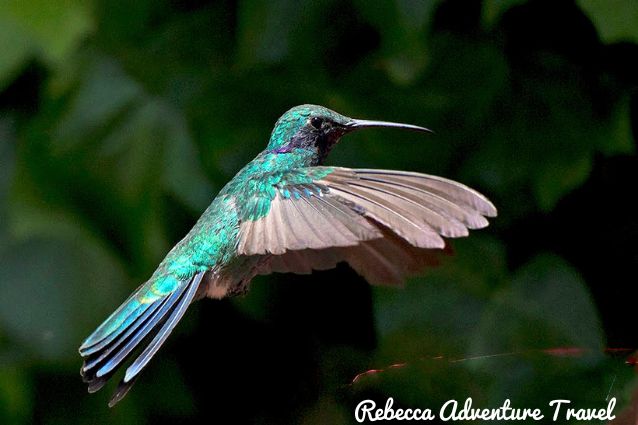
Flying hummingbird
Its diverse natural habitats and ecosystems make Ecuador a megadiverse country. Therefore, you can experience bird-watching activities while you explore the pristine environments. In effect, birdwatchers can go to the Andes, Amazon, Pacific Coast, as well as the Galapagos Islands. As a bird-watcher enthusiast, you already know that this activity depends on weather conditions, so be patient and try to organize your trip keeping this in mind.
Bird-watching slang
As a bird-watching enthusiast, you may already know some of the typical slang when you go on a mission. Here you’ll find a small list of some of the terms that can be useful when you visit Ecuador.
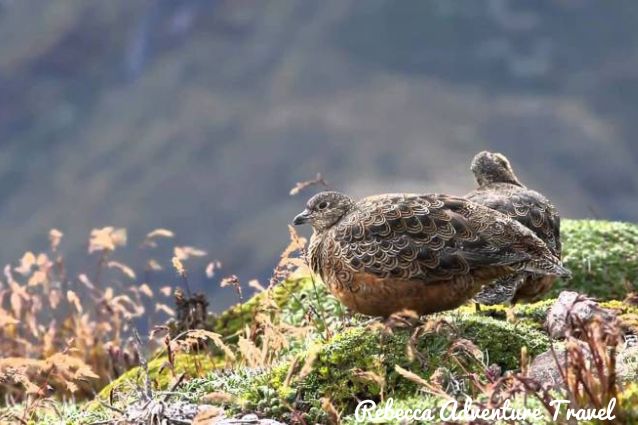
Andes birds nesting
Bird-watching equipment
- Binoculars with a harness or a monocular with a smartphone holder.
- Tripod.
- Point and shoot bird-watching cameras.
- A bird-watching field guide.
- Smartphone Telephoto lenses if you prefer to use your smartphone instead of a camera.
- An All-weather field notebook is super important so don’t lose your notes if it starts raining.
- Solar power bank.
- LED headlamp.
Bird-watching Clothing
- Insect-proof clothing or repellent.
- Birding hats.
- Bird-watching vest with multiple big pockets.
- Waterproof hiking boots.
- Water shoes, for the tours in Galapagos.
- Trekking poles, especially for the tours in Galapagos because of the irregular road.
- Quick-dry hiking pants.
- Quick-dry base layer.
- Waterproof jacket.
- Breathable raincoat.
Essential bird-watching apps
Every one of these apps can help you identify wild birds or to prepare your trip in advance by making a list of what bird-watchers expect.
- iBird pro.
- Audubon Bird Guide.
- Merlin bird ID.
- The Warbler Guide.
- The Raptor ID.
- Birds eye Galapagos.
Top 5 Birdwatching Tours
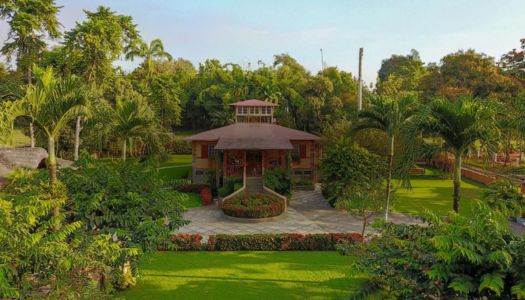
11-Day Luxury Nature Ecuador
This tour is designed for guests who would like to experience Ecuador in a very comfortable way. You’ll visit the most beautiful nooks of Ecuador and, you will find yourself again back into nature.
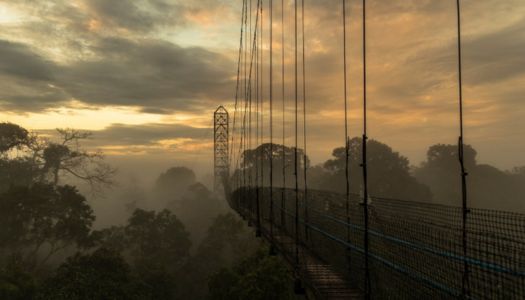
4-Day Amazon Yasuni Adventure
Delve into jungle life with our four-day, three-night Yasuni Amazon Adventure. Enjoy the Sacha Lodge with its 5,000-acre (2,000-hectare) ecological reserve in the Yasuni National Park in the Ecuadorian Amazon.
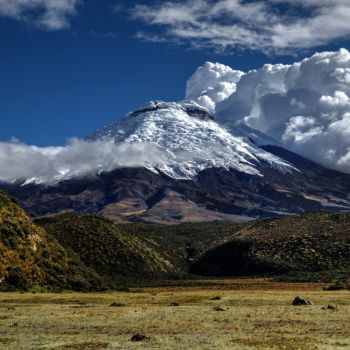
14-Day Self-Drive Ecuador
The country has different regions, the Andes mountains, the Amazon jungle, and the Pacific coast. Each region has its own unique fauna and flora, climate, and culture. Travel in your own rhythm with your own car through the whole country.
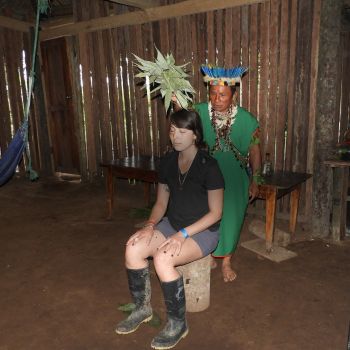
6-Day Amazon Cuyabeno & Papallacta Adventure
Experience nature without being disturbed by the internet. Meet the Tarapuy Community and taste a variety of their ancient preparations. Activities during this tour will vary between wildlife observation by canoe, hiking, and swimming.
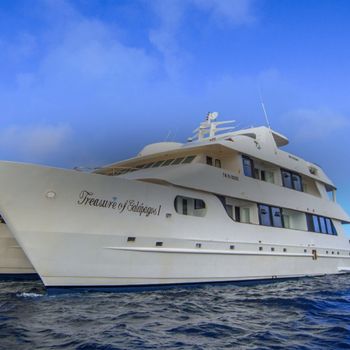
Treasure Of Galapagos Cruise
Treasure of Galapagos cruise around the great outdoors of the wonderful Galapagos archipelago! Each day you will anchor at two carefully selected visitor’s sites and organize at least two excursions.
Physical activity
Ecuador is the perfect location for bird-watching. If you pick the perfect tour, you can enjoy the sight of wild birds. For example, Galapagos’ Kicker Rock is a must if you’re a marine bird fan. The spectacular thing about Kicker Rock is that you’ll be able to see them from the boat. However, there are also incredible routes on the islands.
Please check the chart to see the difficulty of physical activity of the tours available per region. Every bird means that at least there’s one tour available with that difficulty.
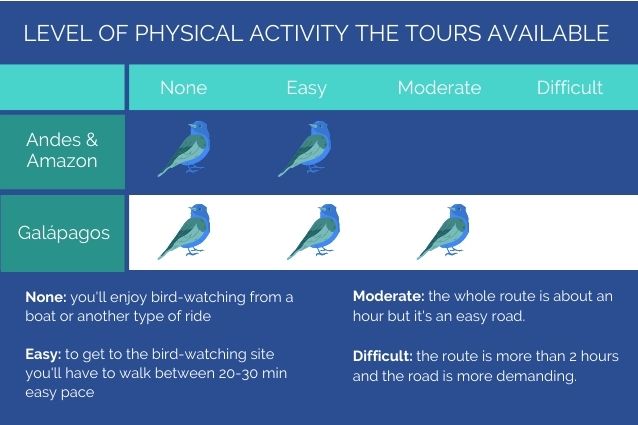
Physical activity chart for bird-watching tours
Rebecca’s Top Picks
Rebecca, the founder of Rebecca Adventure Travel, is always looking for the best places to travel. She’s constantly traveling and watching very carefully all kinds of birds in different places. Check Rebbeca’s top birdwatching tours:
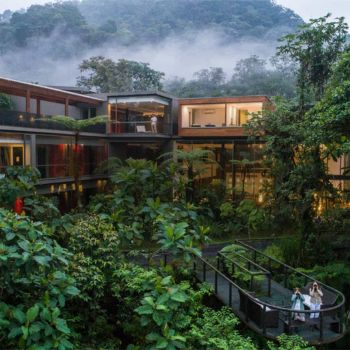
3-Day Mashpi Cloud Forest Experience
In this tour of three days, enjoy the cloud forest in the Mashpi Lodge which is on National Geographic’s list of Unique Lodges in the world.
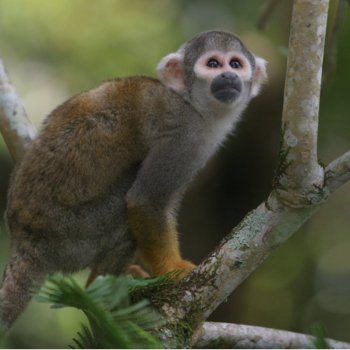
4-Day Amazon Cuyabeno Adventure
Designed for adventurous travelers who love to experience nature without being disturbed by the internet. Discover the Seoqueya Community and learn about this ancient tribe.
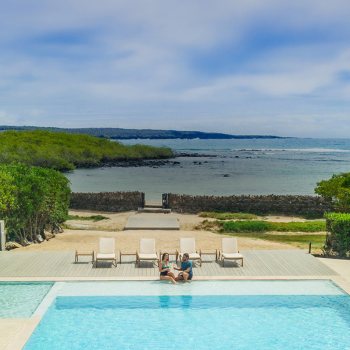
7-Day Galapagos Luxury Safari
This Luxury Safari tour in the Galapagos Islands will be enjoyed by luxury travelers looking for a blissful experience. This tour will allow you to discover the uniqueness of the Galapagos’ endemic animal species underwater and on land.
Bird-watching Destinations
Andes
One of the best things about Ecuador is that it’s very easy to cross the country. For example, between the Andes and the Amazon basin, there are incredible microclimates to enjoy nature and wildlife at their best.
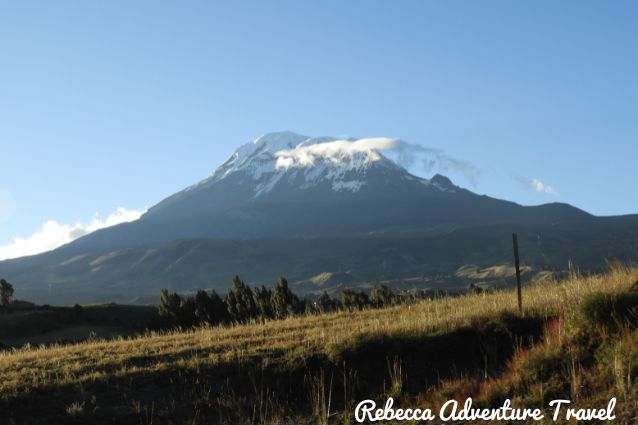
Andes mountains
Birds in ancient Andean cultures
Birds have an important place in Andean culture. For instance, did you know that for ancient Andean cultures, birds were precious resources for the economy? People exchanged colorful feathers across the Amazon, the Andes, and the Pacific Coast. Usually, people used them to adorn the sumptuous garments of rulers. Also, farmers used seabird excrement, also known as guano in Quechua, to fertilize the soil.
2-Day Otavalo Community Experience
On the other hand, people considered that birds had a spiritual representation. For example, in ancient ceramics hummingbirds were represented in battle scenes as flying spears. Owls, on the contrary, carried dead soldiers to the afterlife. In other words, wild birds were considered messengers that crossed regions.
Choco Andean Corridor
The Choco Andean Corridor is a biodiversity hotspot that starts in Colombia, thrives in Ecuador, and runs into northern Peru. This region is a UNESCO Biosphere Reserve. Located in northwest Ecuador, it’s an area between the mountains and the sea.
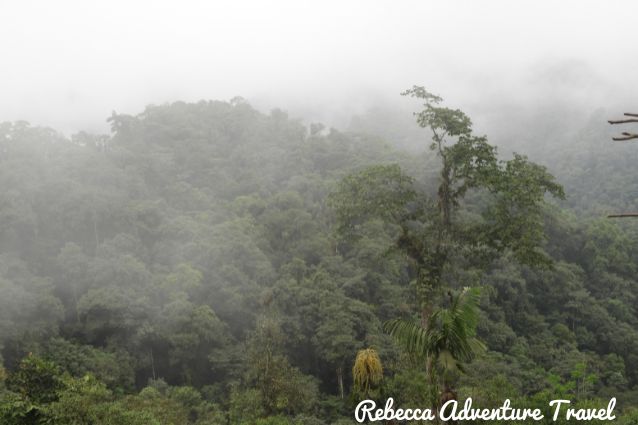
Cloud forest Choco Andino
Choco is Ecuador’s most famous place for bird-watching. Within the wet cloud forest and humid lowland forest, it’s the home of more than 400 species of wild birds. Moreover, the region is part of the Endemic Bird Area (EBA) because it has a variety of ecosystems:
- Lowland Choco.
- Foothill Choco.
- High Paramo grasslands.
At the Choco Andean Corridor, bird enthusiasts can find specialized birding guides and meet certified birdwatchers. Also, you can stay at lodges and hotels specializing in bird-watching tours. And, finally, discover an amazing variety of bird species, from different climatic zones and altitude ranges.
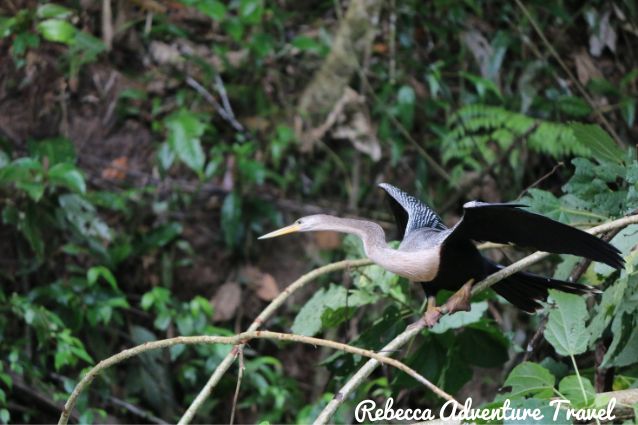
Bird in the Choco Andino
Check out the incredible tours where you can go bird-watching in this region
14-Day Andes, Amazon & Coast Adventure
Mashpi
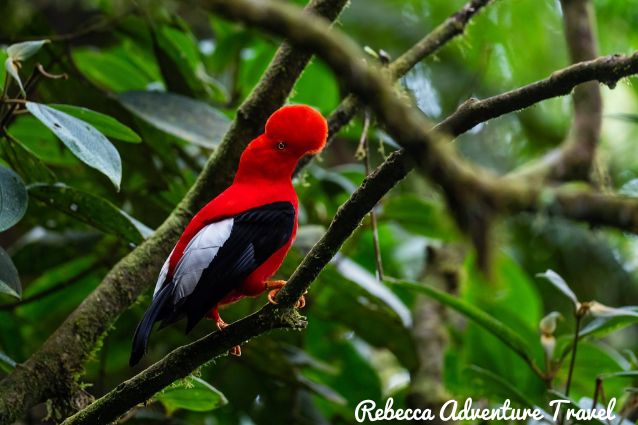
Choco Andes rooster
Mashpi offers an adventure experience where you can encounter 400 species of wild birds, trees, and frogs, among others. While bird-watching, you’ll be able to see endemic species that can only be found in Mashpi.
3-Day Mashpi Cloud Forest Experience
In Mashpi, you can spot some rarities that wander around the forest looking for a mate. Like the umbrella birds, especially the long-wattled umbrella birds that are also known as bull birds. They use leks to find a mate, they show off their crest feathers, covering their heads up to the beak-like a pompadour coiffed.
Also, in this region, you can spot the Tanagers. They dance and sing. They don’t have a strictly defined diet, and they have thousands of colors. You’ll find them only in America. Also, around 60% of the species are found in Andean territories. You won’t miss them because of their beautiful eye-catching metallic colors.
The cotingas are a rare family of birds. They can be found in Central and South America, with more than 60 species that vary in shape, color, and size. These animals are very challenging to spot, so you can consider them a rarity. Definitely, you’ll have to get out before dawn has touched the horizon to see them. Patience and silence will reward you by giving you this very wanted tick.
Mindo
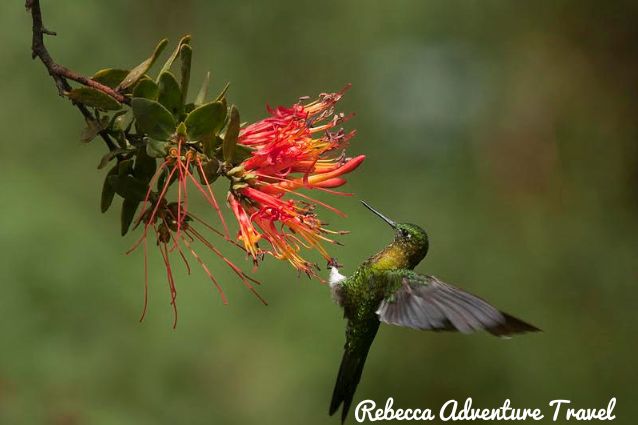
Mindo Hummingbird
This Valley is internationally known for its biodiversity of wild bird species, butterflies, and orchids found in its cloud forest. Its lush subtropical forest is a unique ecosystem. Where bird-watchers can observe different bird species as soon as they start their adventure. The best hours for the observation area are in the morning, between 6 am and 10 am. Cock-of-the-Rock is one of the most noted observation spots.
15-Day Luxury Ecuador & Galapagos Highlights
You can also bird-watch:
- Chestnut-Mandibled Toucan.
- Toucan Barbet.
- Giant Antpitta.
- Scaled Fruiteater.
- Club-Winged Manakin.
- Torrent Duck.
The best moment to do bird-watching activities in Mindo is during the rainy season (October to May). From December to April there are more wild birds due to the high supply of food. During these months, birds start mating and resting.
Amazon
The Amazon region is one of the most diverse ecosystems in the world. This region is rich with cloud forests and tropical jungles, making it a very special place to find flora and fauna. The Amazon rainforest has over 3 million species that live there and over 2,500 tree species.
4-Day Amazon Cuyabeno Adventure
5-Day Amazon Cuyabeno & Papallacta Adventure
Yasuni National Park
Yasuni National Park is one of the most biodiverse areas in the world. There is no actual answer to the question of why Yasuni is so biologically diverse. Some scientists may explain that because of its high annual rainfall or low variation in temperatures.
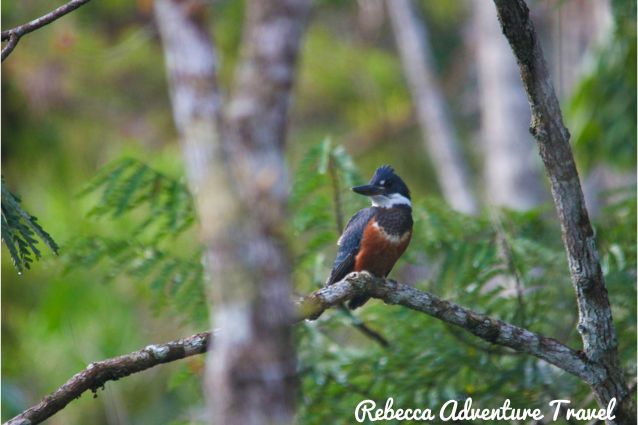
Yasuni bird on a branch
At Yasuni National Park there are more than 500 unique species of wild birds. For that reason, naturalists, bird-watchers, and adventure tourists may be able to see toucans, parrots, macaws, tanagers, potatoes, nightjars, hummingbirds, and eagles, among others.
Some of the wild birds you can spot in the Ecuadorian Amazon while bird-watching are:
- Salvin’s Curassow: is a large black peacock with a bright red bill, white underbelly, and white tail tip. His low ululations are emitted at night.
- Gray-winged trumpeter is strong: this particular bird is terrestrial, its size is more or less like a chicken. They are usually in large groups and wander through the forest flapping their wings as they feed.
- White-throated toucan: they’re through the whole Amazon. They prefer humid tropical forests. They’re often on treetops and in clearings.
- Paradise Tanager: is a small amazingly colored tanager that prefers the lowlands of the Amazonia. They have a bright green head that makes an incredible contrast with the red, blue, and black body. They like to stay high in the canopy.
Galapagos Islands
The Galapagos Islands inspired scientist Charles Darwin to develop his theory of evolution. He traveled to the archipelago in the XIX century. During his trips, the island’s biodiversity helped him discover that each one of them evolved according to the environment. For example, some tortoises have shells that rise in the front, so they can lift their heads high to eat tree cactuses. This was the case of the lonesome George.
On the Islands, you can find the famous Darwin finches. In addition, there are 13 different species of this bird with different characteristics depending on the island that they live on.
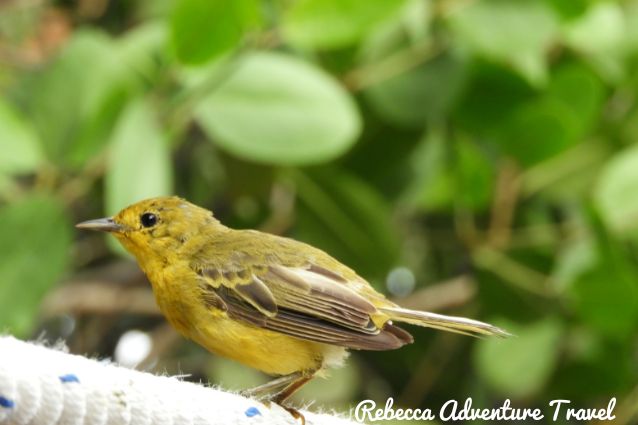
Darwin Finch
As an overview, the Galapagos wild birds can be divided into 4 categories that you can bird-watch on different islands. So, regarding the categories, you may be able to find:
- Sea birds.
- Land Birds.
- Migratory Birds.
- Shore water birds.
Sea birds
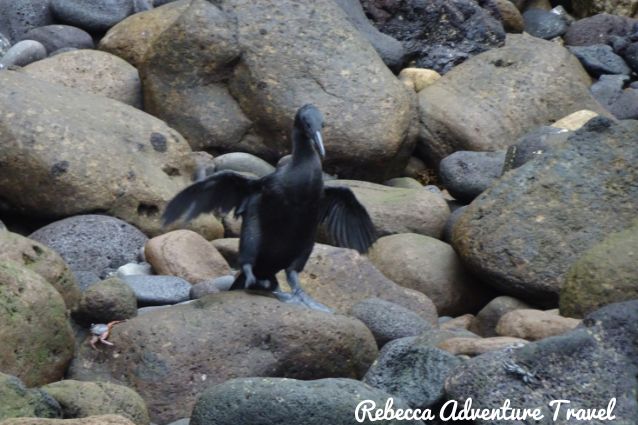
Flightless cormorant
Thanks to the cool waters that surround the islands, wild sea birds love to fish here. For example, you’ll be able to bird-watch:
- Blue-Footed Boobies: they are famous for their blue feet and quirky mating dance. You can see them on Española Island, or Seymour. If you want to spot their quirky dance you have to travel in March.
- Waved albatross: they are an incredibly huge sea bird. Its wings can reach 2,5 meters of wingspan. They’re typical in Española.
- Penguins: these incredible animals adapted to live in the warmer climate of the tropics.
- Flightless cormorant: over the years they evolved and lost their ability to fly but they adapted their bodies so they can catch their food deep in the ocean. You can see them on Isabela island and also in Fernandina
- Frigate birds: you might know them because of their puffed red pouches to attract females. They follow the yachts and other fishing boats. And not only that but they fly like prehistoric Pterodactyls.
Galapagos Archipel I & II Cruise
Land birds
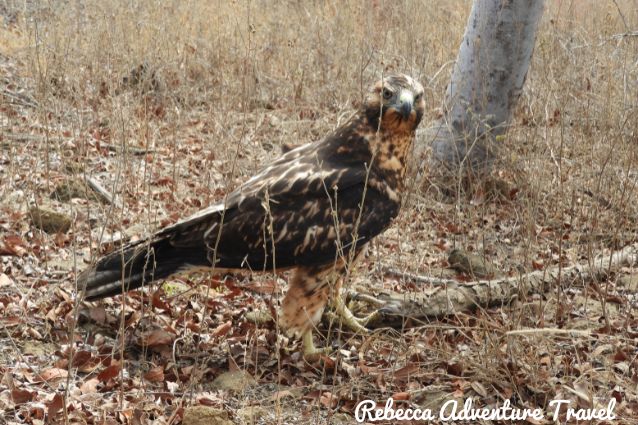
Galapagos Hawk
There are 29 species of wild birds. All of these came from the continent with a combination of flight, strong winds, and floating on something. Surely, you can spot some of the birds that inspired Charles Darwin to develop his theory.
- Darwins’s finch: there are 13 subspecies each one of them with its characteristics and particularities. For example, the cactus finches have long sharp beaks to pierce fruit but on the other hand, ground finches have shorter stubbier beaks to gather seeds from the ground.
- Galapagos Mockingbird: this one has 4 species, you can spot them on most of the islands while the rarer subspecies are only in Española, Floreana, and San Cristóbal.
- Galapagos Hawk: it is one of the only predators of the islands. Sadly because of introduced animals like cats and dogs, there are less than 200 breeding pairs today. Then, if you’re looking for a tick of these wild birds they hunt in packs of 2 or 3.
- Galapagos short-eared owls: they adapted to hunt day or night time to avoid competition from the hawks. The best place you can do bird-watching is Genovesa Island.
Migratory birds
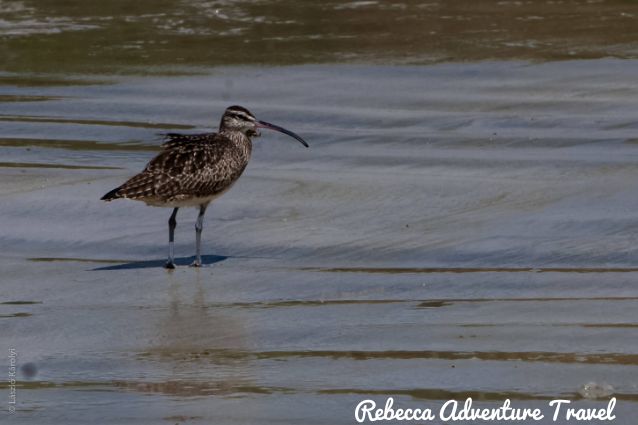
Galapagos migratory bird
Since the location of these incredible islands is within the Pacific Americas, it’s a very desirable stopping-off point for migratory birds. Therefore, they’re a major spot for bird-watching. In fact, most of the birds that come to the Galapagos islands are the ones that escape the cold winter or prefer warmer weather for the array.
- Wandering tattlers: they come from the arctic circle Russia or Alaska and you can spot them around the archipelago.
- Galapagos petrels: they come from April to May to mate and lay eggs. Actually, you can bird-watch other subspecies like the least storm petrel, wedge-rumped storm petrel, and others.
- The ruddy turnstone: these colored fellows visit the Galapagos after breeding in Alaska, Greenland, Norway, and other countries. Usually, they wander around the beaches and coasts of many islands.
- Semipalmated plovers: if you want to tick this sweet little bird, they come from northern Europe during August and leave in the spring of the following year. You can bird-watch them on the beach and open sands.
- Sanderling: they spend months beachside along the shores of the enchanted islands. They spend their summer in the Galapagos and in August they head further south.
4-Day San Cristóbal Expedition
Galapagos Water & shore birds
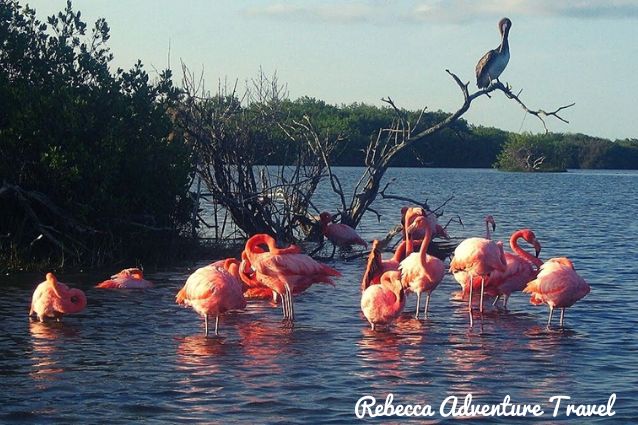
Galapagos Flamingos
These species have made the Galapagos islands their home
- Pied Billed Grebe: you can find them in the marshes, mangroves, and lagoons. This wild bird can resemble a duck only smaller and more compact with a shorter black-banded beak.
- Galapagos lava heron: is a highlight for bird-watching. They like to hunt crabs and move quickly to capture them with their sharp beaks. They frequent lagoons, mangrove forests, and lava-riddled coasts.
- American flamingos: you can spot them in Isabela, Floreana & Rabida. Their diet is varied so they frequent lagoons and pools to catch mollusks, worms, and insects.
- Stilts: they’re called the guardians of the islands because their black neck feathers look so formal. They’re found in highlands, inland, and along the coast of the Galapagos islands. So their diet depends on where they live.
4 Day Galapagos Island Hopping Classic
The good thing about the Galapagos is that no matter where you choose to go, you’re always going to spot a wild bird. And bird-watching is part of the attractions of these incredible Islands. Also, because of conservation matters, you can’t spend more than 1 hour max on the inhabited islands. But don’t worry an hour is a lot of time to bird-watch the best wild birds there. Please keep in mind that all the tours for the uninhabited islands are upon availability.
| Slang | Description |
|---|---|
Big year or day |
A special event for bird-watching, where affectionate go and try to identify as many birds as possible in a determined time and space. In detail, the area defined for this event can go from a country, state, or city. |
Bins or bino |
Binoculars. |
Birder |
Birders are people who enjoy bird-watching not in an obsessive way; it’s more like a hobby. In essence, their skills to recognize are sharpened and they know the typical local birding sites. |
Birding |
Identification and observation of wild birds in their natural habitat. |
Chase |
Is when birders chase after a reported rarity on your bird list. |
Crippler |
A wild bird so captivating that the person can’t get over it. So, it leaves you emotionally crippled by its rarity or its beauty. |
Crush |
Taking very high-quality photos of a bird while bird-watching, can be referred also as a banger. |
Dude |
No, is not the same dude that you used to call your friends. Typically are casual birder that doesn’t know too much yet, and they don’t make too much effort to travel around, prefer nice weather, and have easy access to areas. They don’t look for rare birds, they’re just happy to bird-watch more common ones. |
Dipped out on |
Is when you miss the bird you were looking for, but you know it’s out there. Therefore, this bird may be called a dip. |
Fake |
A domesticated bird or one of dubious origin. |
Grip someone off |
It’s when someone could watch a wild bird that you dipped out. It might happen just because you arrived when the bird flew off or you got lost or the weather changed. |
Jizz |
It refers to all the characteristics that make a bird so special and unique. These include their shape, color, voice, behaviors, plumage, and so on. |
LBJ |
Little Brown Job. Any small, brownish bird is super difficult to identify because there are different species that almost look alike when they’re young. |
Lifer |
Is a bird you have never seen in your life before. |
Mega find, mega rarity, or mega tick |
It’s usually referred to as a very rare species. Therefore, a really good find. |
Nemesis |
Usually when a bird eludes a bird-watcher. |
Patch |
A local area is often frequented for bird-watching. |
Pish |
It’s a noise to call the attention of birds while bird-watching so they come closer and be identified. |
Pelagic Trip |
A boat trip just to bird-watch marine birds. |
Tick |
This refers to the act of making a tick on a bird checklist to demonstrate that you record a particular species. There can be different types of ticks. For example, a life tick (for a lifer) country ticks when there’s a specific country you want to go to bird-watching. |
Twitch-Twitcher |
Is when you go chasing after a rare wild bird. Thus, a twitcher happens when a bird-watcher is obsessed with his/her growing list of birds, so he/she is going to make all the efforts to complete their list. |
Usual Suspects |
Refers to the wild birds that you expect to see in an area. |
Vagrant |
It refers to a bird that is outside of its typical ecological range. Then, it isn’t expected to be seen where it was spotted. |
Vis Mig |
It’s a short to visible migration. Thus, it’s referred to as being able to see a group of migrating birds. |
Warbler Neck |
This happens when you experience stiffness and pain in your neck after spending many hours bird-watching high up in the treetops. Big year or day |
Yabow |
A non-bird-watcher that scares off all the birds from the area. Generally, either due to their carelessness or maybe a hyperactive dog. |
There’s a certainty of one thing and that is that if you decide to spend your nature vacation in Ecuador bird-watching is going to be part of your itinerary for sure!
Build your own trip
You can also contact us to create your customized trip. If you have special requests like a complete private tour with services and hotels chartered, a honeymoon, a family trip, or a very short tour, just contact our destination experts and we will help.

